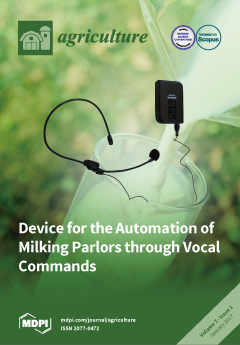Land management practices for rice productivity and carbon storage have been a key focus of research leading to opportunities for substantial greenhouse gas (GHG) mitigation. The effects of land management practices on global warming potential (GWP) and greenhouse gas intensity (GHGI) from rice production within the farm gate were investigated. For the 13 study sites, soil samples were collected by the Land Development Department in 2004. In 2014, at these same sites, soil samples were collected again to estimate the soil organic carbon sequestration rate (SOCSR) from 2004 to 2014. Surveys were conducted at each sampling site to record the rice yield and management practices. The carbon dioxide (CO
2), methane (CH
4), and nitrous oxide (N
2O) emissions, Net GWP, and GHGI associated with the management practices were calculated. Mean rice yield and SOCSR were 3307 kg·ha
−1·year
−1 and 1173 kg·C·ha
−1·year
−1, respectively. The net GWP varied across sites, from 819 to 5170 kg·CO
2eq·ha
−1·year
−1, with an average value of 3090 kg·CO
2eq·ha
−1·year
−1. GHGI ranged from 0.31 to 1.68 kg·CO
2eq·kg
−1 yield, with an average value of 0.97 kg·CO
2eq·kg
−1 yield. Our findings revealed that the amount of potassium (potash, K
2O) fertilizer application rate is the most significant factor explaining rice yield and SOCSR. The burning of rice residues in the field was the main factor determining GHGI in this area. An effective way to reduce GHG emissions and contribute to sustainable rice production for food security with low GHGI and high productivity is avoiding the burning of rice residues.
Full article





